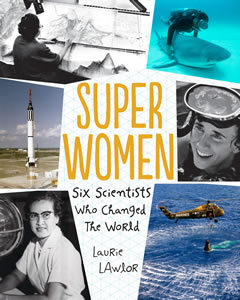Dinosaur Lady: The Daring Discoveries of Mary Anning, the First Paleontologist by Linda Skeers is a nonfiction picturebook that is currently scheduled for release on July 1 2020. As a kid, Mary Anning loved hunting for fossils with her father. One day, that hobby led to an unexpected discovery: the skeleton of a creature no one had never seen before! Mary had unearthed a dinosaur fossil, the first to ever be discovered. Her find reshaped scientific beliefs about the natural world and led to the beginning of a brand new field of study: paleontology. For the rest of her life, Mary continued to make astonishing finds and her fossils are displayed in museums all across the world! The daring discoveries of Mary Anning not only changed the scientific world, but also helped change people’s attitudes towards women scientists.
Dinosaur Lady is a picturebook that not only talks about the early years and discoveries in paleontology, but how women were viewed in science, and to a certain degree still are. I liked the illustrations, they added a great deal of detail and heart to each page. I thought the information included was interesting and was accessible. I think the narrative and information were well balanced and should keep the reader's interest. I also liked the additional information that was included at the end of the book. I really enjoyed the read and think the book just might inspire kids interested in topic others might try to dissuade them from perusing to keep on studying and working towards their goals.






